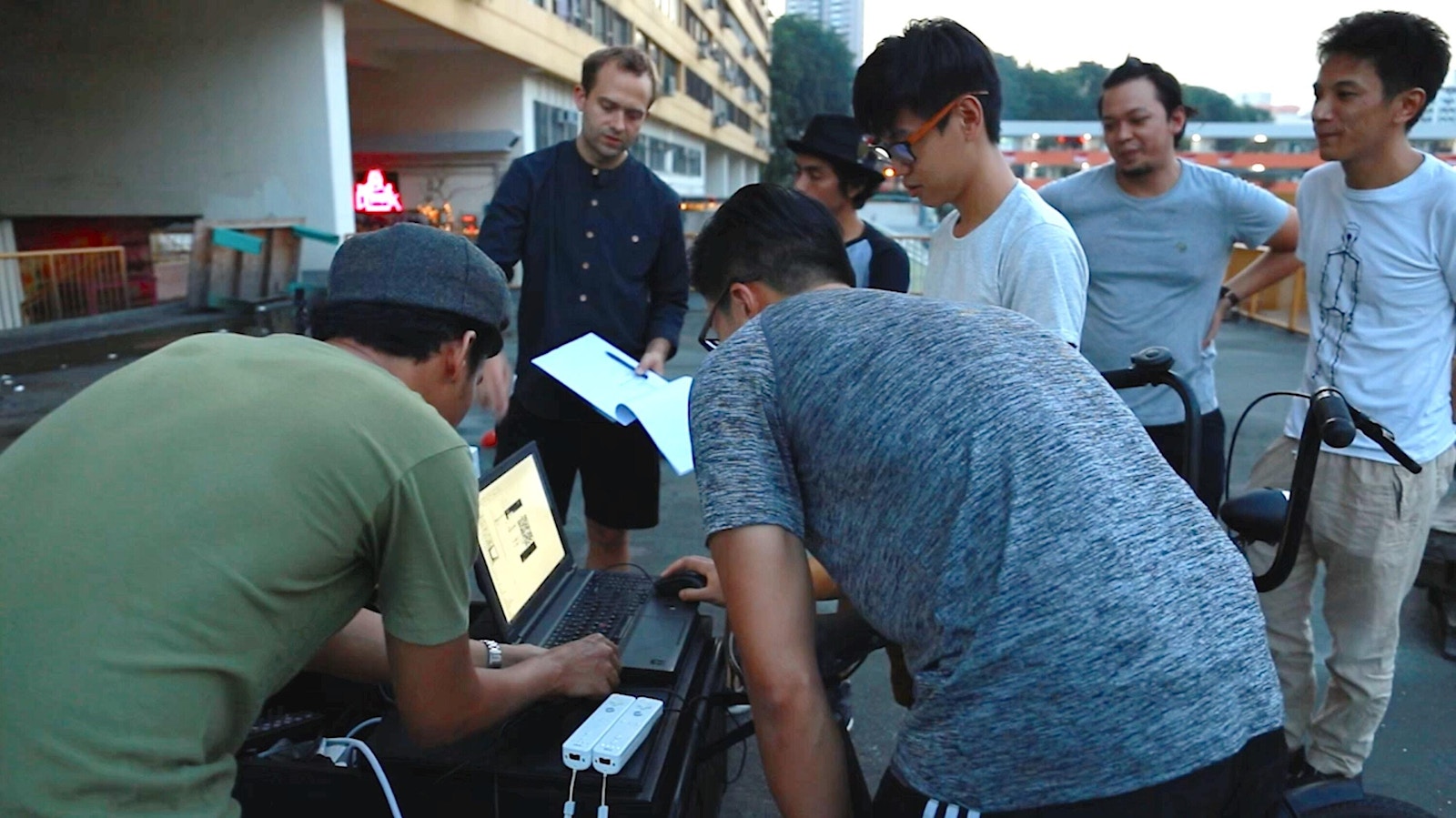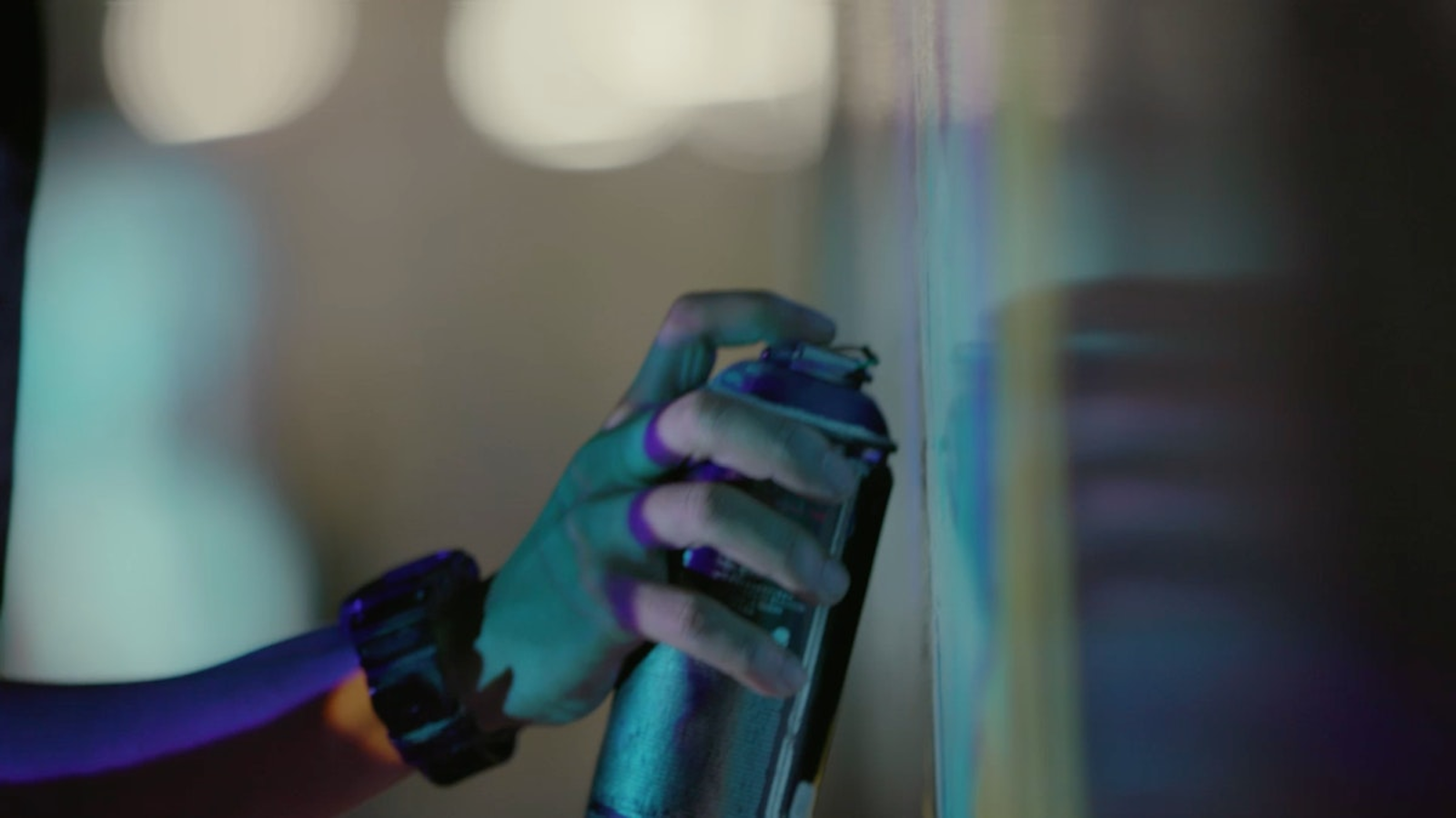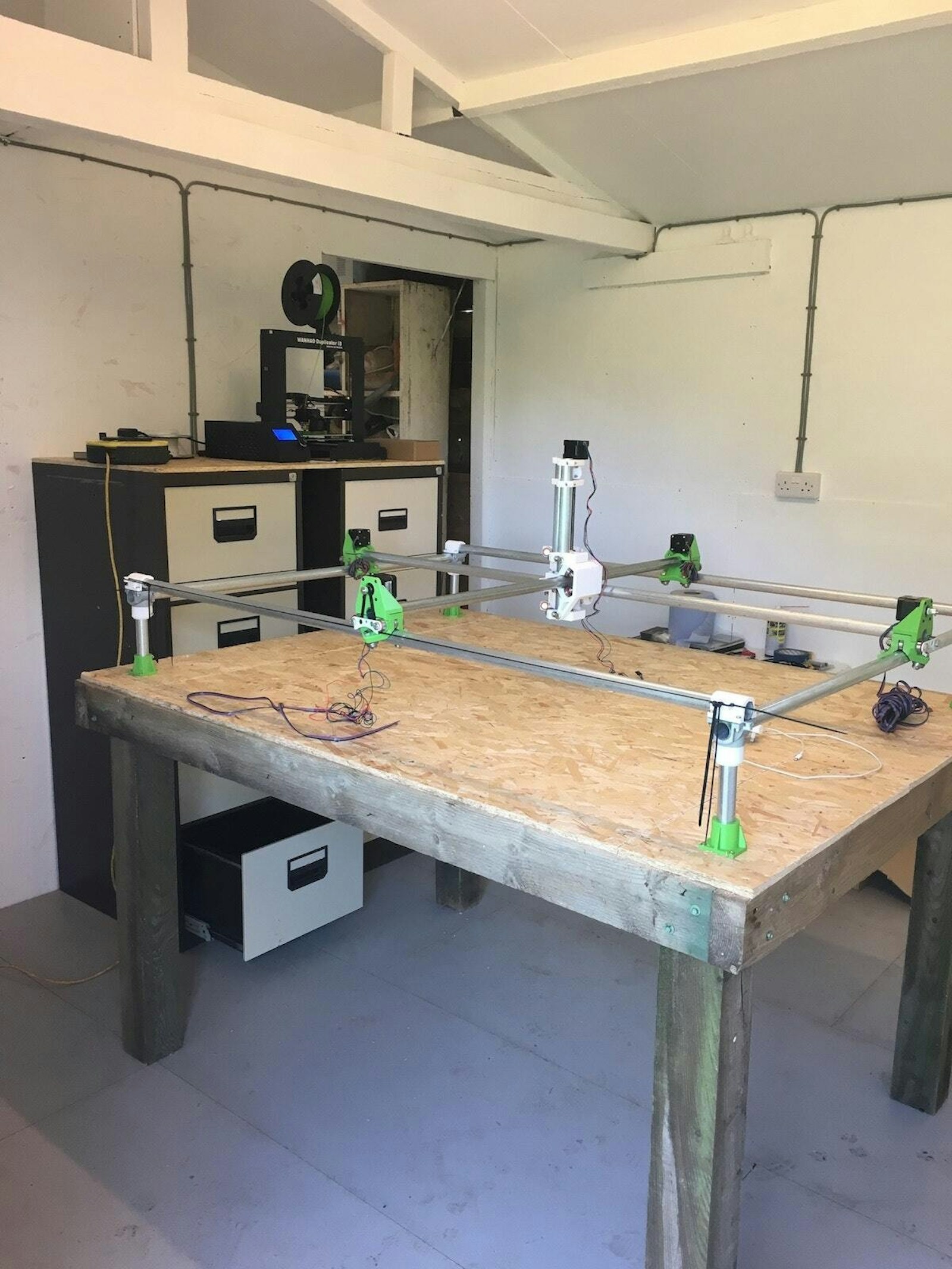We speak to designer Rob Peart about surprises, Singapore and kopi-fuelled standups
What makes you a better human and designer? For Rob Peart, working in another country is the answer. Having spent the past two years in Singapore working as an associate creative director at SapientRazorfish, Rob recently moved back to the UK, where he has just founded his own company. Looking back on his time in Asia, in addition to a diverse and thriving collaborative environment, it was the relationships formed and the people encountered along the way that made the most lasting impression. A world away from the chaos of life in London, he tells us why tech-oriented Singapore was such an easy place to live in.

Rob Peart
Job Title
Designer and Founder of Testbed
Based
Bath
Previous Employment
Associate Creative Director, SapientRazorfish, Singapore (2016–2017)
Creative Lead, INTWorks (now Anyways) (2013–2015)
Freelance designer (2011–2013)
Education
BA Graphic Design, Nottingham Trent University (2003–2006)
Clients
Asia Pacific Breweries, Nike, GSK, Unilever, COS, Converse
Website
Social Media
instagram.com/legendaryhappines
twitter.com/lgndryhappiness
linkedin.com/in/rjpeart
Day-to-Day
How would you describe your role while at SapientRazorfish and currently?
My role was twofold: I contributed to creative and design, but also helped organised the other tracks of work, making sure everyone had what they needed to keep going. I was mostly responsible for the quality of work being made by the project team. At Sapient we had a system of ‘product owners.’ If you’re a product owner, it’s up to you to make sure everything is up to scratch and meeting the brief. So you have to ensure everyone has what they need, knows what they’re doing and is feeling confident and comfortable. I’d also have to pull my own weight in my domain too.
My wife and I moved out to Singapore in 2015. She is Singaporean and we wanted to spend some more time with her family. I’m back in the UK now and starting my own little venture called Testbed. The aim is to help designers and other creative people make prototypes of their ideas. I’ve seen first-hand how designers and creatives can sometimes struggle to get ideas off the ground when working with new or unfamiliar mediums and technologies, and we want to help them explore those ideas with confidence.
How collaborative was it?
It was a very collaborative culture. We worked in project teams made up of people from technology to strategy to business to creative and more. We’d have daily standups to communicate progress in each of the domains and make sure everything was on track, using those times to discuss any knotty problems people needed assistance with.
“We think about London as being pretty diverse, but the design companies I’d experienced were overwhelmingly white European.”
What does a typical working day look like?
This would depend on the project, but typically each morning would start with a coffee (or kopi) fuelled standup of between 10 to 30 minutes, sharing progress with the team. At the end of each standup you should have a crystal clear idea of what’s needed from you that day. We’d then break off as individuals or into smaller groups and start working through our tasks. Often we’re all working in the same small room, so we can discuss and resolve things as they come up to keep things moving forward. Once or twice a week the client would also join us for a standup to see project progress, and we’d have frequent calls with partners, vendors and other collaborators. Campaign-based projects would run slightly differently as they’re much more organic in nature, but would very loosely fit the structure. Unless you’re in production, where every day is different.
How did you land the job?
It was a spot of good luck and being in the right place at the right time. You never know when an opportunity might present itself. I’m fortunate to have had the freedom and resources to work on a few tech-oriented side projects alongside my professional work, which meant I was well positioned to show some knowledge of technology alongside design when this opportunity came along.
What skills and tools are essential to a job like this?
This might sound really obvious, but the most important skill is being able to quickly take on board lots of new information and somehow make sense of it in a short space of time. Being able to identify avenues for exploration, further research and critique. I feel it’s the fundamental role of a designer.


How I Got Here
What did you want to be growing up?
All sorts of things. My dad’s a builder so I went through all that stuff: a builder, architect, carpenter. But also the usual, like wanting to be an astronaut, milkman and postman. By the time I was studying my GCSEs I knew I wanted to be some type of designer.
How would you describe your routine and working life when you were there?
For me, Singapore was a very easy country to live in. Everything is very convenient, and I fell into a solid routine quite quickly. It was a welcome change from the chaos and messiness of working life in London. I’d heard some horror stories about other agencies, but Sapient was quite unique and had a great culture. You do the work and then you go home, so I’d mostly be out at six to head home and see the kids, or to the bar with colleagues. A lot of other places don’t have such a good work-life balance. There were also lots of opportunities to travel, and many of my coworkers would routinely travel to work in Indonesia, Philippines, and Hong Kong.
How did you find living and working in Singapore different to the UK?
There were a lot of differences, mainly down to the size of the agency I was working in and the type of the work we were doing. What I most enjoyed, which is unique to Singapore, was working with people from totally different backgrounds and cultures. I was working alongside people from China, India, Indonesia, Philippines, Canada, USA, Sweden, Singapore, New Zealand, Australia, Russia and more. We think about London as being pretty diverse, but the design companies I’d experienced were overwhelmingly white European. It challenged some of my own habits and assumptions, and I learned a ton.
The direct nature of the work relationships was challenging at first. Clients will communicate with you directly via WhatsApp and things can become quite informal, but still very demanding. It made it hard to keep track of decisions and encouraged the client to make quick calls on the fly. However, it did mean that often we eventually became friends, and could work well together.
Why was it a good place to be for your career?
Singapore is a hugely tech-oriented country, with lots of government subsidies and support around tech and innovation, which means you’re in touch with that side of things all day, everyday. You start thinking about it all differently. I met a lot of hugely talented people that taught me a lot and motivated me to develop skills around areas I was interested in.
I worked on a campaign for Desperados beer that we won a Cannes Lion for, and got to present my investigations into neural nets and graphic design at the Singapore Creative Coders meetup. I also met some people that I hope to be able to call friends for life.
Could you do this job forever?
Absolutely. The role of a designer will always be evolving, it’s more likely to outgrow me than I am it.
“The role of a designer will always be evolving, it’s more likely to outgrow me than I am it.”
What made you return to the UK?
The UK’s absolutely criminal rules around visas and spousal rights meant that we had to return when we did, otherwise we’d face a kind of exile. It doesn’t apply to me directly, but to my wife, so of course it affects us all. This is only something to watch out for if you’re a UK citizen with a non-EU spouse wanting to return back to the UK after you’ve been working abroad. If you’re away for more than two years, indefinite leave to remain status is revoked, and the visa process for the non-EU spouse must begin again. It’s an extremely expensive, long and arduous process. There’s also a financial limit that you must meet in order to even apply for a visa for your spouse, which the Supreme Court recently judged as being lawful but causes ‘significant hardship’ to thousands of families that either don't meet the financial threshold or can't afford to apply for the visa. Even applying for the visa could mean extended periods away from family. If we returned at a later date, it would mean living apart from one another for considerable periods, which is not a healthy thing, especially when you have kids. The limiting factors also create a hostile perception in the minds of those having to go through the process.

Words of Wisdom
What would your advice be to someone just starting out, wanting to work in the creative industry in Singapore?
There’s a few practical things to be aware of. The main thing is that you’ll need a sponsor (a job) before you can go and live there to work. There are strict rules around the number of foreigners that companies can employ, and employers must pay a levy for each foreigner that they hire. These rules seem to change quite a lot depending on the supply and demand of foreign workers, so sometimes jobs can be hard to find. But once you’re there, it seems to be reasonably simple to move between jobs. Many of the foreigners I met there had arrived because their partner was moving for work, or were married to locals.
I’d really recommend going to work in another country and culture if you can. It will surprise you, challenge you, and ultimately make you a more understanding human and designer.
Interview by Marianne Hanoun
Mention Rob Peart
Mention SapientRazorfish
Mention Testbed
Mention Anyways
Mention Desperados







